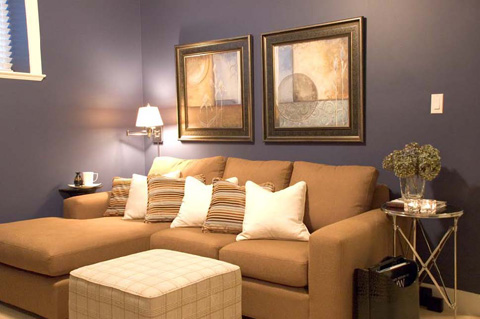I did not yet summarize the discussions on color naming at EI three weeks ago, so here we go…
In the Color Imaging conference, Shoji Tominaga presented the result of his recent Investigation and Analysis of Color Terms in Modern Japanese.
Tominaga has worked on color naming for a long time. In this most recent study, he used the linguistic method of asking the respondents to compile lists of color names, i.e., no color samples are presented. The lists are then analyzed statistically.
The study is double, in the sense that the respondents where asked to compile two different lists: the first with basic color terms and the second with essential (called "absolute" in the paper) color terms.
The first figure shows the frequencies of the basic color terms:

Note that the 11 universal color term are followed by two metallic colors, silver and gold. Tominaga notes that this shows the advantage of the linguist's approach of harvesting names without showing samples, because for example the Munsell color tree does not include metallic colors, hence silver and gold would not have been elicited and would have been missed.
Note further colors terms 14 and 15. These terms would correspond to turquoise and chartreuse, which, as we commented in our own paper, have been proposed as being basic color terms in the far eastern languages.
Translating 水色 [みずいろ] with turquoise instead of aqua as in the paper and 黄緑 [きみどり] with chartreuse instead of yellow green is not completely justified, because by not anchoring the names to an actual color sample, we do not really know what the correct translation is. This is a point in our favor. Correct me if I am wrong, but note also that 黄緑 [きみどり] is not monolexemic, as the use of two kanji indicates, instead of the use of a radical (艾 ?).
The second figure shows the frequencies of the essential color terms.

Note how changing the question completely changes the distribution. There is a big frequency drop after Hering's opponent colors.
The data in the two figures have been cleaned up for synonyms, which is very important in Japanese, as for example 赤 、赤い、赤色、あか、あかい、あかいろ、レッド、red, all eight refer to the same color red. However, these synonyms are trivial.
An interesting result of Tominaga's paper is how they find all synonyms, based on the frequency of color terms in the list. Take for example gray. If you look the term up in a dictionary, you will find three translations, namely 灰色 [はいいろ] (ash color), 鼠 [ねずみ] (mouse), and グレー (gray). Are these synonyms?
This Venn diagram illustrates the proposed algorithm:

The lists are parsed to find entries that contain a pair of terms in a single entry. This counts as an intersection of the two terms and is tallied. For example, ash and gray appear 31 times as a pair.
Then the single occurrences of each term is counted. The non-obvious part of the algorithm is that when the number of pairs is smaller than both occurrences of the single term, then the two terms are synonyms, otherwise they are not.
Therefore, gray and ash are synonyms, gray and mouse are synonyms, but ash and mouse are not synonyms. By the way, ash is a light and mouse is a dark gray.
I did not understand why the tally for ash is different when compared to gray (1167) from when compared to mouse (1122). In their table with the details, the numbers are 1198, respectively 1598 for the same case.
The other two EI papers on this topic I attended were in the session on Art, Aesthetics, and Perception in the Human Vision conference. Stephen Palmer presented the paper Preferences for individual colors: WAVEs of color, culture, music, and emotion and Karen Schloss presented Aesthetics of color combinations. These papers are not yet available from the SPIE Digital Library.
I was not impressed by neither these papers, as the experiments were conducted with small numbers of respondents and the experimenters constrained the observations. I therefore think of the results more as opinions of the experimenters than as objective observations that can be generalized.
Anyway, Palmer was asked explicitly why metallic colors like silver and gold were not elicited. Palmer's answer was that specular reflections are not relevant, so silver and gray are synonyms, as are yellow and gold. After that, I do not have much to add.
After we gave our paper in the session on the Dark Side of Color, I sat down with Tominaga to discuss where to go from here. Essentially we agreed that he has a point against the Munsell Sheets of Color because they have no metallic samples, and I had a point for it because anchoring the color terms to colorimetric data allows operations like translations between different cultures, sub-cultures, and time epochs.
While we consider metallic colors, we should also be able to do both matte and glossy samples, because a matte color will reflect the illuminant diffusely and de-saturate the color by adding the white illuminant.
Tominaga noted that today, any experiment would be done on a computer display, so the color atlas should be a piece of software, not a physical atlas. Yet, it would have to be more than just a database of colorimetric values.
Fortunately, Tominaga has conducted extensive research on BRDF, bidirectional reflectance distribution function, for correctly rendering surface reflectance for any material. The proposal is then for Tominaga to have a Ph.D. student implement an application that can be embedded on a Web page to correctly render colored surfaces and collect color terms.
This software can then be used for a more rigorous implementation of Nathan's and Dimitris' online color naming experiments.
The more difficult problem will be how to get around the artificial limitations of sRGB and take full advantage of current display technologies as well as those of the future.






















